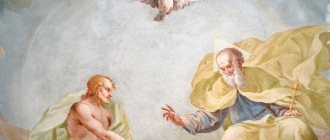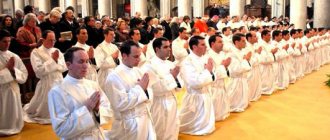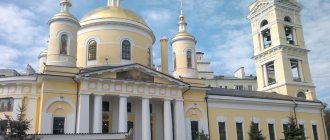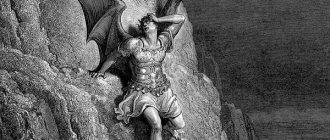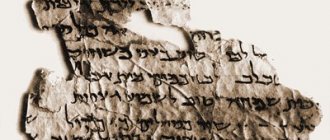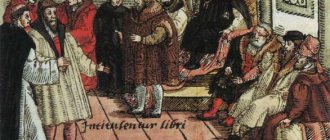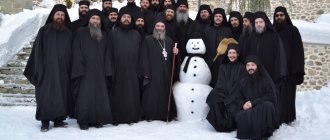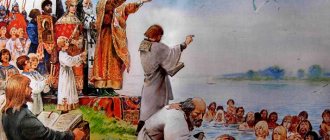The Resurrection of Christ or the holiday of Easter is considered the most significant in Christianity. It is celebrated in many countries around the world. It symbolizes the essence of the Christian faith. The death of God's son atoned for all human sins. His resurrection symbolizes the truth of faith. After her, every person received hope for eternal life and salvation.
Preparations for the holiday begin a few days in advance. People prepare for Easter especially carefully. Easter cakes are baked and eggs are painted on the festive table. Many are sure that the main treat is sweet, rich pastries. But that's not true. Colored eggs are not inferior in importance to Easter cakes. They symbolize the rebirth of life. Therefore, on Easter, it is customary to eat the egg first, and only then the Easter cakes.
According to church canons, the celebration of Easter lasts 40 days. That is how long after the Resurrection Christ was with his disciples. The most magnificent festivities take place in the first week after Christ's Resurrection. These days are called Bright or Easter Week.
What does the Easter egg symbolize?
The egg serves as a symbol of the coffin and at the same time - a symbol of life. Painted with red paint, it commemorates the Resurrection of Christ and our Redemption “through the precious Blood of Christ, as of a lamb without blemish and without spot” (1 Pet. 1:18–19), the rebirth of believers in Christ. In addition to the fact that the red color indicates the blood of Christ shed on the Cross, it also marks the royal dignity of the Savior (in the east, in ancient times, red was considered a royal color). In addition, the color red symbolizes Easter joy and celebration. Thus, by giving eggs to each other and greeting each other with the words “Christ is Risen!”, Orthodox Christians profess faith in the Crucified and Risen One, in the triumph of Life over death, the victory of Truth over evil. It is assumed that in addition to the above reasons, the first Christians painted eggs the color of blood not without the intention of imitating the Old Testament Easter rite of the Jews, who smeared the doorposts and lintels of the doors of their houses with the blood of sacrificial lambs (doing this according to the word of God, in order to avoid the defeat of the firstborn from the Destroying Angel) (Ex. .12:7).
In ancient times in Rus', the red Easter egg was given a special mysterious meaning. Thus, in one Russian manuscript of the 16th century, the shell was likened to the sky, the inner film (“hymen”) to clouds, the white to water, the yolk to earth, the “dampness in the middle of the egg” (that is, its liquid state) to sin, and the thickening of the egg was compared with the destruction of sin through the shedding of the sacrificial blood of Christ and the Resurrection of Christ.
A little history
Painted eggs are the main symbol of Easter
All Christians paint Easter eggs, and this tradition began in pagan times. Our ancestors considered the egg a symbol of life, fertility, and rebirth. Chicken testicles were dipped in the blood of animals that were sacrificed to the Gods, thereby gaining the favor of good spirits. A family that brought such a gift to the Gods could count on leniency and help from them.
Since ancient times, it was customary in Rus' to bring colored eggs and Easter cakes to church on the eve of Easter, and after the service to kiss three times and exchange colored cakes.
The master gave wooden or bone Easter paints to his servants for Easter. Wealthy gentlemen did not consider it shameful to give colored eggs to the poor for Easter along with alms. It was believed that Easter is the holiday when the unity of the entire people occurs, regardless of social status and material wealth. Everyone is equal before God - this is what the tradition of giving paints on the day of the Great Resurrection meant.
When, according to legend, did the tradition of painting eggs for Easter begin in Christianity?
The Christian tradition of painting eggs and giving them to each other at Easter (with the greeting: Christ is Risen!) dates back to ancient times. Tradition firmly connects this tradition with the name of Equal-to-the-Apostles Marina Magdalene, who, after the Ascension of the Lord, went to Rome, where she met with Emperor Tiberius and preached the Good News to him. It is alleged that she began her sermon with the words “Christ is Risen!” and presented the monarch with a red egg.
Bible version
The Bible says that Mary Magdalene first presented a colored Easter egg to the emperor when she came to him with the good news of the resurrection of Jesus Christ. After the resurrection took place, Jesus' disciples joyfully proclaimed the good news to all believers. Mary Magdalena immediately went to Emperor Tiberius to be the first to tell him about what had happened. There was a law according to which a person, even the poorest, must bring something as a gift to the emperor, even a chicken egg. Mary Magdalene also came with an egg, but she chose this offering with intention. An egg is a new life born, a victory over death. When Mary Magdalene told Tiberius about the resurrection of Christ, the emperor did not believe a single word she said. He said: “What you say is impossible, just as it is impossible for the egg you brought to turn red in my hands.” And a miracle happened - the shell turned red. Tiberius then exclaimed: “Christ is Risen!” Since then, believers on the bright holiday of Easter greet this way: “Christ is Risen!”, and in response they must say: “Truly He is Risen!”
There is another legend according to which, after the crucifixion of Jesus Christ, the Jews gathered at the table. Fried chicken and boiled eggs were served. One of the Jews said that after three days a miracle would happen and Christ would be resurrected. The second Jew laughed loudly and replied: “Rather, the fried chicken will become alive and the eggs will turn red than what you said will happen.” At that moment, the fried chicken cackled and the boiled eggs turned red.
There are many versions of the origin of the tradition of dyeing eggs.
The Legend of Jesus Christ and the Merchant
The Lutheran Church offers its own version of where the tradition of painting eggs for Easter came from. This legend is directly related to the biblical events that took place during the execution of Jesus Christ. When Jesus was being led to Calvary, a merchant hurried to help Jesus because he saw how much he could not bear to carry the heavy cross. The merchant put the basket of eggs on the ground, and when he returned to get it, he saw that the shells had turned red. Believing in the Divine manifestation, he did not sell the red eggs, but distributed them to his friends and neighbors.
The story of St. Peter the Apostle
There is another biblical story about the Easter egg, and why eggs are painted for Easter.
One of the disciples of Jesus Christ, Peter, who was later named an apostle and founded the Christian church, after the resurrection of his teacher, went to the Jewish cities with the good news. But in one city Peter was received with hostility and began to throw stones at him, wanting to destroy every Christian. The stones, before reaching Peter and his accomplices, began to turn into red eggs. The Jews immediately believed in Divine powers and converted to Christianity.
What colors besides red are acceptable for Easter eggs?
Over time, other colors became established in the practice of coloring Easter eggs, for example, blue (blue), reminiscent of the Kingdom of Heaven, or green, symbolizing rebirth to eternal blissful life (spiritual spring).
Nowadays, the color for dyeing eggs is often chosen not based on its symbolic meaning, but on the basis of personal aesthetic preferences and personal imagination. Hence the large number of colors, even unpredictable ones.
It is important to remember here: the color of Easter eggs should not be mournful or gloomy (after all, Easter is a great Holiday); in addition, it should not be provocative or pretentious.
Procession
It means the procession of the Church towards the risen Savior. Having walked around the temple, the procession stops in front of its closed doors, as if at the entrance to the Holy Sepulcher. The ringing stops. The rector of the temple and the clergy sing the joyful Easter troparion three times. Then the priest, holding a cross and a three-candlestick in his hands, makes the sign of the cross with them at the closed doors of the temple, they open, and everyone, rejoicing, enters the church, where lamps and lamps are burning, and everyone sings together: “Christ is risen from the dead!”
Is it possible to paint Easter eggs?
This is not a sin. Different peoples have preserved the ancient tradition of painting Easter eggs to varying degrees. In the old days, there was even a special terminology to denote the differences between painted and painted eggs: painted eggs - fully painted eggs; Easter eggs are eggs painted with plot and ornamental patterns. Eggs with a pattern of stripes, spots and specks were called specks. At the same time, the most common method of coloring eggs, perhaps, was and remains the method using onion peels.
Matins
Next they serve Easter Matins: they sing the canon compiled by Saint John of Damascus. Between the songs of the Easter Canon, priests with a cross and censer walk around the temple and greet parishioners with the words: “Christ is Risen!”, to which the believers answer: “Truly He is Risen!”
At the end of Matins, after the Easter canon, the priest reads the “Word of St. John Chrysostom,” which tells about the joy and meaning of this day. After the service, all those praying in the church greet each other with Christ, congratulating each other on the great holiday.
Immediately after Matins, the Easter Liturgy is served, where the beginning of the Gospel of John is read in different languages (if several priests are serving).
After the end of the festive service, Orthodox Christians break their fast - they treat themselves to blessed colored eggs and Easter cakes at the temple or at home.
Is it possible to decorate Easter eggs with stickers with icons?
Currently, various types of stickers and thermal film are used to decorate Easter eggs, often equipped with images of Jesus Christ, the Virgin Mary, Angels, saints, and temples. This practice is often criticized in modern Orthodox journalism as a profanation of the sacred, since after a short time these images will most likely become part of household garbage. It is necessary to take into account: an icon is not a picture; this is a Christian shrine. And it should be treated exactly like a shrine.
Easter cakes and Easter
This is one of the oldest symbols of the Resurrection of Christ. Kulich is similar to artos - a special round tall bread with an image of a cross and a crown of thorns. Artos in the temple means a sacrifice for people - Christ himself.
The Easter meal reflects Christians' faith in the invisible presence of the risen Lord at their holiday meal.
Tradition says that at common prayer the apostles remembered the Last Supper and partook of the Body and Blood of Christ. And during the meal, they left the first place at the table to the invisibly present Lord and put bread in His place.
Imitating the apostles, the shepherds of the Church established on the feast of the Resurrection of Christ to place artos in the church on a table or lectern in front of the Royal Doors, signifying that the Savior who suffered for us became the bread of life for us.
All days of Bright Week after the liturgy, the artos is carried around the temple in a procession of the cross. On Saturday of Bright Week it is broken up with prayer and at the end of the liturgy, while kissing the cross, it is distributed to the people as a shrine.
In Rus', for Easter, in every house they baked festive bread, similar in appearance to artos, but rich, with raisins and nuts, and consecrated it in the temple. This bread received the name “Kulich” from the Greek word “kollikion” - “round bread”.
Easter cakes are baked from rich dough with a lot of butter and eggs. Catholics, in addition to yeast cakes, also bake shortbread cakes, the so-called baba.
There was a sign that if the Easter cake was a success, then there would be prosperity and well-being in the house. On Easter, on the festive table, the top of the Easter cake was cut off horizontally, the Easter cake was cut into circles or slices, and everyone received a piece.
For Easter Sunday they prepare not only Easter cake, but also Easter from cottage cheese. In the form of a truncated pyramid, it means the Holy Sepulcher, in which the Resurrection of Christ took place. Easter is prepared in a special collapsible wooden form - a pasochnitsa made of wooden planks, on the inside of which the letters “ХВ” (“Christ is risen!”) are carved, as well as a cross, a spear, a cane, sprouts and flowers - symbols of the suffering and resurrection of Jesus Christ, and sometimes a dove is a symbol of the Holy Spirit. These images and the inscription remain on the finished Easter when the bean bag is removed.
How to bless your own eggs for Easter?
There is a tradition of blessing Easter eggs (together with Easter cakes and cottage cheese). In the Russian Orthodox Church, consecration is accompanied by a “prayer to bless cheese and eggs” (that is, for the consecration of cheese and eggs). You can bless the eggs yourself, using a secular rite. To do this, before the Easter meal (eggs, Easter cake, Easter), you should sing the Easter troparion three times: “Christ is risen from the dead, / trampling death over death, / and giving life to those in the tombs,” then sprinkle the food with blessed water (if any) with the words: “In the name of the Father and the Son and the Holy Spirit. Amen".
Sources:
- Levashev P.N. The custom of eating red eggs on Easter / P. Levashev. - SPb.: type. Katansky, 1895. - 8 p.
- Lebedev P. Ya. The science of worship of the Orthodox Church: In 2 hours / Comp. Rev. Moscow spirits Seminary Peter Lebedev. — 3rd ed. - M.: book. magician V.V. Dumnova, p/f inheritance br. Salaev, 1890. - 352 p.
- Easter, Christian holiday // Encyclopedic Dictionary of Brockhaus and Efron: in 86 volumes (82 volumes and 4 additional). - St. Petersburg, 1890-1907.
- Korinfsky A. A. People's Rus': All year round Russian legends, beliefs, customs and proverbs. people. - M.: M. V. Klyukin, 1901. - 724 p.
- Follow-up on the Holy and Great Week of Easter and throughout Bright Week. - M.: Publishing House of the Moscow Patriarchate of the Russian Orthodox Church, 2012. - 176 p.
Easter greetings
There is a tradition of congratulations on Easter. Relatives present each other with Easter cake and a painted egg with the words: “Christ is risen!” The one to whom the Easter gifts are presented answers: “He is risen indeed!” Next you should kiss three times.
Even in ancient Rus', it was believed that Easter dye had unique divine power. Easter eggs can stop fires, prevent pestilence in pets, and save people from diseases. The girls passed the shell over their cheeks, believing that this ritual would help them become even more beautiful. Krashenki were carefully stored until next Easter.
Easter is one of the most joyful and bright religious holidays. On this day, people visit each other, gather around a large table, communicate, and have fun together. The main place on the festive table is occupied by Easter cakes and colored eggs, as a symbol of Great Easter.
The meaning of the Easter egg and its color
The Easter egg is a symbol of the Holy Sepulcher, the life-giving principle: the shell is the dead shell, the egg itself is the nascent life. Each color that eggs are painted means something:
- red is the color of the Lord’s blood shed for human sins;
- green – the color of good health, rebirth;
- brown – fertility, material well-being;
- yellow – protection from sinful acts and temptations;
- orange – the color of happiness, joy;
- blue is the color of the sky, heavenly life.
How Christians celebrate
Each country has its own customs for celebrating Easter. The most common thing is cooking delicious food, praying in church and congratulating each other. It is important that Europe and America do not celebrate Easter on the same day as Russia. The date is calculated based on the calendar new moon, but each religion has its own principles for this.
The fact is that the difference in the celebration of the holiday varies more not by country, but by the direction of Christianity. There are three main forms in the world:
- Catholicism;
- Orthodoxy;
- Protestantism.
Catholics mainly live in central and southern Europe. Their traditions include lighting a fire and special candles - Easter. The flame is an important symbol of Christ for them. After the service, Catholics take the sacred cinders home.
Spanish and Italian Catholics organize a colorful costume carnival on Easter, where you can sing and dance with everyone. Each participant carries a sprig of a plant in his hands.
Protestants, who mostly live in America, celebrate Easter with loud concerts where they sing psalms and songs. The pastor reads a sermon and all the people pray, holding hands. Children also take part in the liturgy, performing thematic scenes.
Orthodox people on this only day of the year stand at the night service in the church and light food. But before that, they undergo special training. On Maundy Thursday they go to the bathhouse and clean the house. Good Friday is a time of prayer and reflection about the eternal, thanks to which people are cleansed of sins. On Saturday they paint eggs and clean the house. On Sunday, after the liturgy, they go to celebrate: breaking their fast with modest food, clinking glasses with Cahors, knocking eggs, handing out gifts.
In Russia there is a parent's day. It is celebrated on the Tuesday after Easter week. It is believed that at this time it is necessary to honor the memory of deceased loved ones. People go to the cemetery and bring flowers to their resting places. They give alms to the poor.
Every country must have a rich fair. It sells treats, Easter symbols and gifts for loved ones. Sometimes city streets are decorated with lanterns and ribbons. Adults try to make a special holiday for children, with games and competitions. Easter is a family day all over the world that brings loved ones together.
Celebrating Easter, which always falls on a weekend Sunday, has become a pleasant tradition for the Slavs. There is a ritual for celebrating this holiday that has been preserved for centuries. But whenever someone makes a certain gesture towards another, it is good to do it with meaning. Then the meaning of actions will be clear and close to the heart of every person, and therefore will give conscious joy.

